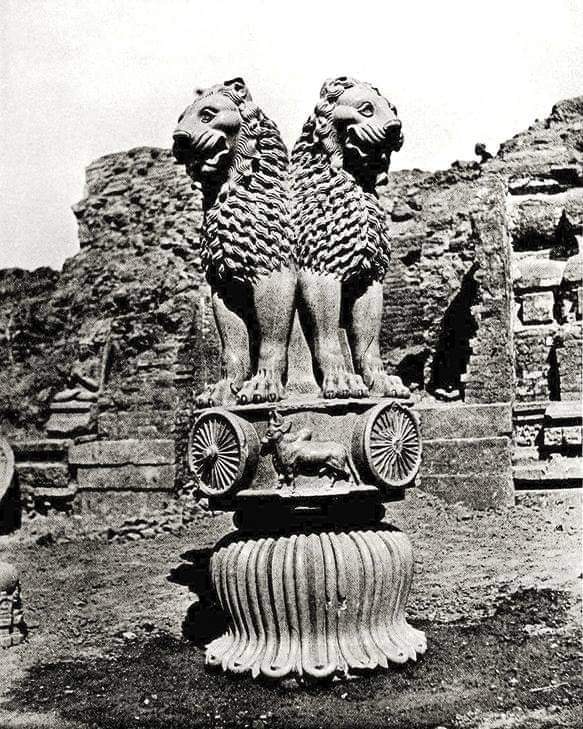The Lion Capital of Ashoka stands as one of the most iconic symbols of ancient India, representing the rich cultural and historical heritage of the Mauryan Empire. Erected by Emperor Ashoka around 250 BCE in Sarnath, India, this monumental sculpture commemorates the site where Gautama Buddha delivered his first sermon, a significant event in Buddhist history. This article delves into the origins, symbolism, and enduring legacy of the Lion Capital, tracing its journey from ancient times to its prominent place in modern India.
The Origin and Structure of the Lion Capital

The Lion Capital of Ashoka was originally the crowning feature of a grand column erected by Emperor Ashoka following his conversion to Buddhism. This remarkable structure, carved from a single block of highly polished sandstone, stands 2.1 meters (7 feet) tall. The capital is crowned by four life-sized lions, seated back-to-back, symbolizing strength, courage, and sovereignty. These lions rest on a drum-shaped abacus, adorned with intricate carvings of wheels in relief, interspersed with depictions of four animals—a lion, an elephant, a bull, and a galloping horse—each symbolizing different aspects of the Buddhist faith and Ashoka’s rule. Beneath the abacus lies a bell-shaped lotus, further emphasizing the Buddhist symbolism.
The entire structure was secured to its monolithic column by a metal dowel, a testament to the advanced craftsmanship of the time. The Lion Capital was not merely an architectural marvel but also a symbol of Ashoka’s dedication to spreading the teachings of Buddhism across his empire.
The Rediscovery of the Lion Capital
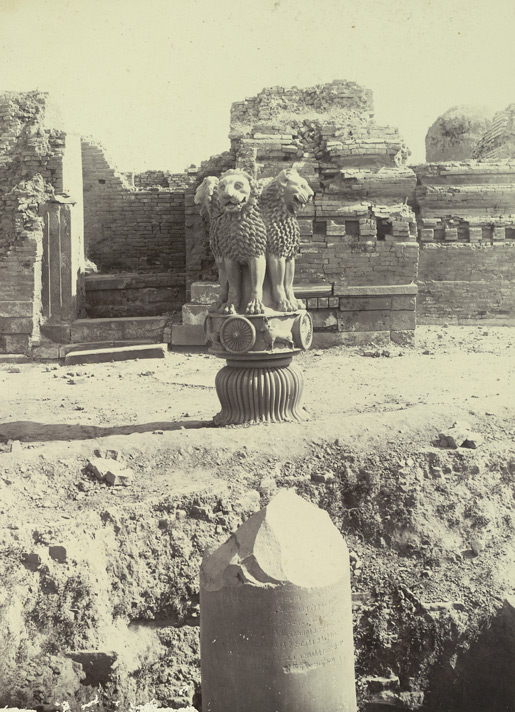
Over time, the Lion Capital fell into obscurity, eventually collapsing and becoming buried under layers of earth. It remained hidden until the early 20th century when it was excavated by the Archaeological Survey of India (ASI) under the supervision of F. O. Oertel during the winter season of 1904-1905. While the column itself had broken before it was buried, the Lion Capital was found in relatively good condition, though it had suffered some damage. Cracks were found across the neck just above the lotus, and two of the lions had sustained damage to their heads. Today, this majestic sculpture is displayed in the Sarnath Museum, not far from its original site.
Symbolism and Significance
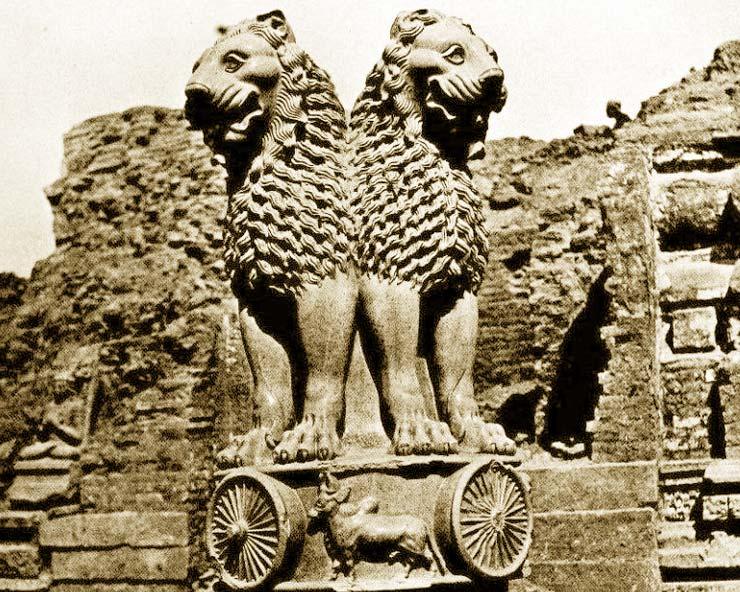
The Lion Capital of Ashoka is rich in symbolism, reflecting both Buddhist and secular themes. As one of the earliest significant stone sculptures to appear in South Asia after the decline of the Indus Valley Civilization, it marked a resurgence of monumental art in the region. The sudden emergence of such sophisticated stone carvings has led some scholars to speculate about the influence of Persian stonemasons, particularly those associated with the Achaemenid Empire, whose naturalistic carving traditions may have influenced Indian artisans. Others argue that the transition from wood and copper to stone was a natural progression in a period of rapid technological and cultural exchange.
In addition to its artistic significance, the Lion Capital holds profound symbolic meaning. The four lions represent Ashoka’s commitment to spreading the message of Buddhism throughout his empire, while the wheels, known as Dharma Chakras, symbolize the eternal cycle of life, death, and rebirth—a core concept in Buddhist philosophy. The animals on the abacus—lion, elephant, bull, and horse—are believed to symbolize different stages of Buddha’s life or the four cardinal directions, emphasizing the universal reach of his teachings.
The Lion Capital in Modern India
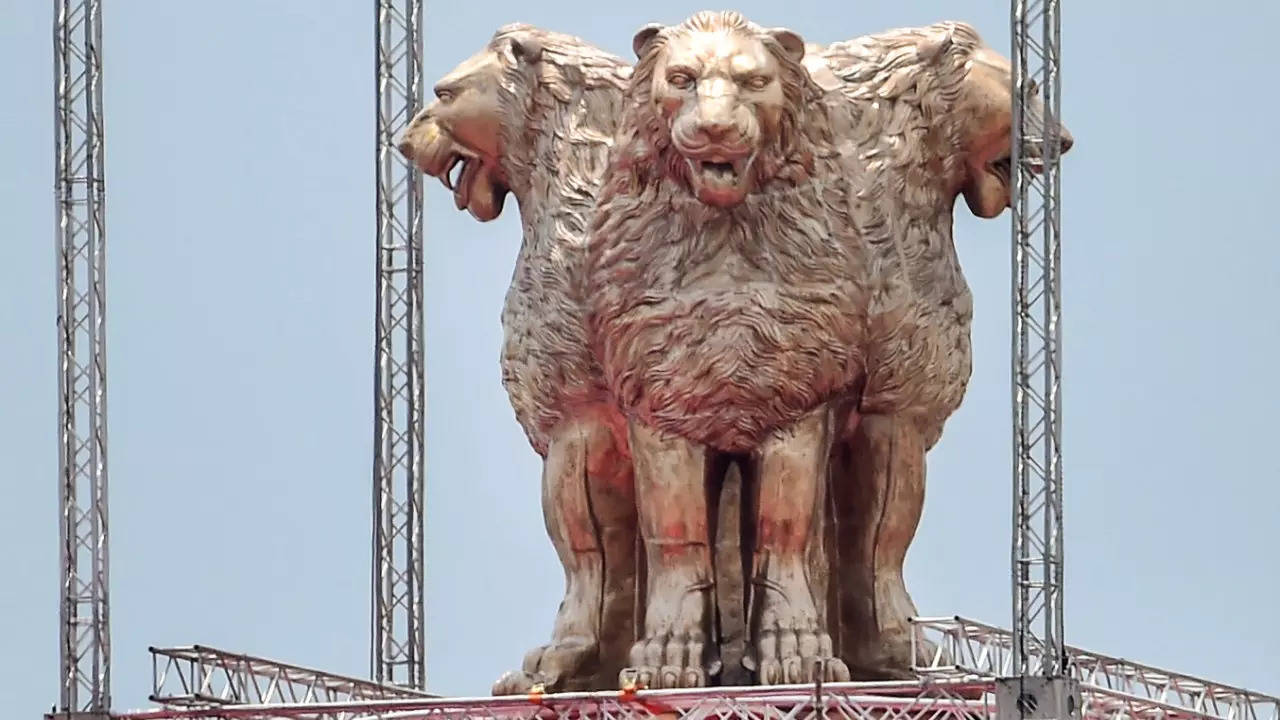
The enduring legacy of the Lion Capital was solidified in 1947, shortly before India’s independence, when Jawaharlal Nehru, the interim Prime Minister of India, proposed that the wheel on the abacus be adopted as the model for the wheel in the center of India’s new national flag. Furthermore, the Lion Capital itself, minus the lotus base, was chosen as the official state emblem of India. This emblem, which continues to adorn government documents, currency, and official seals, serves as a powerful reminder of India’s rich historical and cultural heritage.
Historical Context and the Legacy of Sarnath
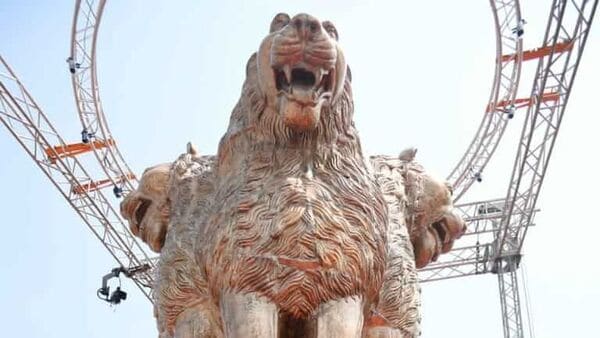
Sarnath, where the Lion Capital was erected, has a long and storied history, particularly in the context of Buddhism. The site was significant for being the location of the Buddha’s first sermon, marking the beginning of the Buddhist Sangha. Over the centuries, Sarnath attracted numerous visitors and scholars, including the Chinese pilgrims Xuanzang and Faxian, who documented their visits in the early centuries CE. These accounts, although written long after the events they describe, provide valuable insights into the historical and religious significance of the site.
Despite the decline of Buddhism in India after the 12th century, Sarnath remained a revered site for pilgrims from Tibet, Burma, and Southeast Asia. However, by the late 19th century, the site had fallen into neglect, with many of its bricks being repurposed for other constructions. The rediscovery and excavation of the Lion Capital and other artifacts at Sarnath in the early 20th century helped to revive interest in the site and its historical significance.
Conclusion
The Lion Capital of Ashoka is more than just an ancient sculpture; it is a symbol of India’s rich cultural heritage and a testament to the enduring legacy of Emperor Ashoka’s reign. From its origins as the crowning piece of a monumental column to its role as a symbol of modern India, the Lion Capital continues to inspire and remind us of the profound cultural and spiritual traditions that have shaped the Indian subcontinent. Today, it stands not only as a relic of a glorious past but also as a symbol of the ideals of peace, unity, and the rule of law that continue to guide India as a nation.
